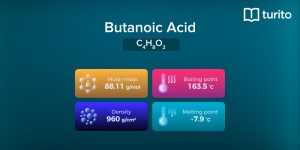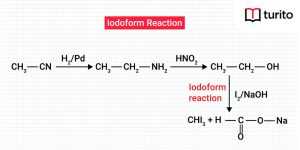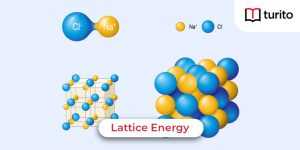Monomeric Protein
Proteins are vital substances for all living beings. They help in various biological functions. That’s why they are called building blocks of life. They have their unique structures and functions.
But do you know they are also constructed from some smaller units? What are those micro units called? Why are proteins compared to polymers? What are the monomers of proteins?
This article aims to let you get the answers to all these questions. Let’s dive into it.
History of Monomer
As a science student, you are aware of the fact that many chemical substances comprise small units. These small units play a vital role during the birth of plastic. After the development of plastic, researchers started to take a keen interest in these small units. As a result, with polymerisation and copolymerisation, different hybrid structures were developed from these small units.
During industrialisation, organic chemistry developed at a relatively fast pace. The diversification of structures led to the rise of petrochemical products.
What Are Monomers?
The term “monomer” is formed by joining two words, ‘mono’ and ‘mer.’ The prefix’ mono-,’ means “one”, and the suffix ‘-mer,’ means “part”.
Monomers, or the small units, are molecules that bind chemically with other, similar or different, molecules and form a long chain. Through the process of polymerisation, they form long repeated chain molecules. These small units can be synthetic or natural.
The term polymer is used when an unspecified number of monomer units are linked to form a long chain. Simply put, polymers are the complex structures of several monomer units. If there are less than 100 monomer units chemically joined together to form a polymer, such polymers are called oligomers.
What Are Proteins?
The polymer units essential for living beings is termed as protein. Proteins are biopolymers containing amino acids as their monomer units. Chemically speaking, proteins are the types of condensation polymers in which the monomeric units are the 𝛼-amino acids. Proteins are formed by the covalent linkage of elements like nitrogen, oxygen, carbon, and hydrogen. Traces of sulphur, iodine, and phosphorus are also present in some proteins.
Proteins are formed by linking several monomer units. They contain one or more polypeptide chains. Every polypeptide chain is devised by joining a lot of amino acids via chemical bonds called peptide bonds. The sequence of amino acids is determined with the help of gene coding for a certain protein.
After the formation of the polypeptide chain, it turns into a particular three-dimensional structure. This structure is different for each polypeptide chain.
Structure of Protein
The structure of the protein consists chiefly of four monomer protein structures. These are quaternary, secondary, tertiary, and primary structures.
- Primary structure: Proteins are coiled into spirals and tucked sheets. The amino acid sequence controls the primary structure of proteins.
- Secondary structure: Hydrogen bonds connecting amino acids dictate the secondary structure of proteins. H-bonds can only break with an increase in temperature or acidic properties.
- Tertiary structure: The sulfur atoms in amino acids connect tightly through peptide linkage.
- Quaternary structure: In this structure, individual units are connected to spatial disorientation.
How Are Proteins Formed?
The key structural and functional unit of polymer is the monomer. These monomers are fundamental constituents of polymers. Amino acids are known as protein monomers. They join a large number and connect through peptide bonds, which construct polypeptide chains. Large proteins are formed when two or more polypeptide chains are joined together. The sequence of amino acids decides the function and structure of a protein.
Protein monomers are molecules that merge to form numerous-protein complexes. Polymers made up of organic monomers found in living organisms are biopolymers. Monomers are divided into different classes such as alcohols, sugars, acrylics, amines, and epoxides.
All living organisms have cells with many large molecules like polysaccharides, nucleic acids, and proteins. These macromolecules even have microstructures or units that are combined in high quantities. These macro numbers of microstructures as monomers. The bonding makes macromolecules or polymers of some monomers.
This monomer binds up to form a long chain of molecules which is only possible because of the presence of carbon and its reactivity properties. This way, they can form different chains of monomers of proteins.
What Do You Mean by a Monomer of Protein?
Protein and nucleic acid are the fundamental requirements of all living cells. The elementary units of these monomers of proteins are amino acids. Hence, it will be more accurate to say that proteins are concocted of monomers called amino acids. The linking of protein monomers is due to polymerisation. These constituent monomers of proteins are further critical in the life processes.
As a result, constructing protein-like polymers is understandable by supervising the conditions and carrying out the polymerisation of amino acids. Repeating this process produces some comparatively easier amino acids such as sugars and nucleotides. With the help of this similar process, various biomolecules assume patterns.
Building Blocks or Elementary Units: Proteins Monomers
Proteins are made up of some micro units. These micro units are generally known as monomers, and in the case of protein monomers, these are termed amino acids.
Twenty different amino acids construct all the proteins in the biological system in different sequences. The order of amino acids in which they are arranged is called the primary structure of a protein. Chemically speaking, an amino acid molecule consists of three groups, i.e., amino group (-NH2), carboxylic acid group (-COOH), and side-chain (R group). The side chain (R group) is specific for every amino acid. The simplest amino acid, glycine, contains a hydrogen atom in the R group.
Moreover, some other types of monomers of proteins depend on the molecules’ size. Usually, these elementary units are categorized as essential and non-essential constituents of proteins, depending on their requirement. You may get shocked to know that around ninety thousand arrangements or combinations of proteins comprise these amino acids.
Examples of Protein Monomers
A total of 20 examples of protein monomers are present in living beings. These are classified into two classes, i.e., essential proteins that are necessary for life and non-essential proteins that are not so important. These are further divided into three categories, i.e., hydrophilic (or water-loving), hydrophobic (or water repelling), and those that neither repel nor love water.
These 20 examples of protein monomers are
1. Water-loving or hydrophilic monomer of protein:
- Asparagine (Asn)
- Glutamine (Gln)
- Lysine (Lys)
- Aspartic acid (Asp)
- Glutamic acid (Glu)
- Histidine (His)
- Arginine (Arg)
2. Water-repelling or hydrophobic monomer of protein:
- Valine (Val)
- Isoleucine (Ile)
- Phenylalanine (Phe)
- Leucine (Leu)
- Methionine (Met)
- Cysteine (Cys)
3. Neither water-loving nor water repelling monomer of protein:
- Glycine (Gly)
- Serine (Ser)
- Tyrosine (Tyr)
- Proline (Pro)
- Alanine (Ala)
- Threonine (Thr)
- Tryptophan (Trp)
Summary
Simply speaking, monomers are the building blocks of proteins. In the case of proteins, the building blocks are amino acids bonded through amide linkages to conform to the protein’s backbone (the polymer). Twenty amino acid monomers are used to build proteins, and they, as a group, each contain C, H, O, N, and two contain S.
Each protein will have a different sequence of amino acids. Hence, the “name of the monomer that makes up proteins” will differ from protein to protein. The chain will often have great diversity inside each protein instead of repeating amino acids. Sequence and composition of the amino acid residues are considered the protein’s primary structure and play a key role in protein function.
Frequently Asked Questions
1. What are the elementary functions of the monomer of protein in the human body?
Some of the important biological functions of proteins are given below:
- They serve as the chief structural material for animal tissues.
- They transport cellular necessities such as oxygen, metals, fatty acids, hormones, etc.
- Some proteins act as enzymes which catalyze all biological reactions.
- Some globular proteins regulate metabolic processes.
- Some proteins function like antibodies which defend the body against the invasion of foreign organisms.
2. What are essential and non-essential 𝛼-amino acids?
Out of 20 amino acids required for protein synthesis, the human body cannot synthesize only 10. Essential or indispensable amino acids are these ten amino acids.
The ten essential amino acids are Valine, Methionine, Isoleucine, Leucine, Phenylalanine, Tryptophan, Threonine, Lysine, Histidine, and Arginine.
3. How does the constitution of a protein relate to its function?
The function of a protein is proportional to its structure. For instance, if the protein structure is fibrous (like keratin and collagen), it behaves as a structural protein or protective protein. If there is any replacement in the structure of the amino acid, in that case, the protein becomes denatured. It does not perform its proper function.
4. Can proteins be classified based on their solubility and physical properties?
Proteins can be classified into three categories based on their solubility and physical properties.
Simple proteins: These proteins convert into amino acids on hydrolysis. For example, keratin, elastin, albumin, collagen, etc.
Conjugated proteins: These proteins contain two parts, i.e., amino acids and prosthetic groups. For example, nucleoproteins, hemoproteins, etc.
Derived proteins: These proteins are formed from native proteins by the action of heat and chemicals. For example, denatured protein.

Relevant Articles
Butanoic Acid – Structure, Properties, Uses
Butanoic Acid The carboxylic acid, butanoic acid, has the structural …
Butanoic Acid – Structure, Properties, Uses Read More »
Read More >>What is Iodoform? Characteristics and Uses
Iodoform The formula for Iodoform is CHI3. It is biotic …
What is Iodoform? Characteristics and Uses Read More »
Read More >>Lattice Energy – Explanation, Factors & Formulas
Lattice Energy Lattice energy evaluates the intensity of the ionic …
Lattice Energy – Explanation, Factors & Formulas Read More »
Read More >>Lead Acetate – Definition, Properties, Uses
Lead Acetate Have you ever licked lipstick when you sketch …
Lead Acetate – Definition, Properties, Uses Read More »
Read More >>




















Comments: